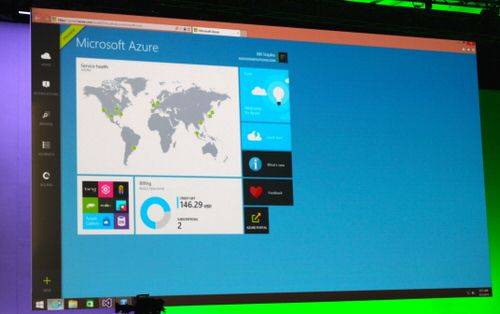Mobile and cloud go together like spring and rain, which is why Microsoft wants to keep them together for years to come—the latest updates to its Azure Web-based computing service will certainly help with that.
Microsoft Azure is the company’s bet against Google and Amazon Web Services, and at the recent Microsoft Build conference, we learned the platform has been updated with a slew of features like .NET backend support, single sign-on with the Active Directory authentication system and offline data syncing through the new Microsoft Azure Preview Portal, which the company called “an important step forward in delivering our promise of the cloud without complexity.
Developers, however, have several places to go when it comes to choosing these kinds of services.
While Microsoft has been busy focusing on its core Windows business over the last few years, Amazon and Google have dominated the cloud by offering massive computing power at highly competitive prices.
Now that Microsoft has found its new CEO—who happens to be the former head of its Cloud and Enterprise group—Satya Nadella seems to be orchestrating a turnaround to catch up to its rivals in the cloud.
Azure Portal Debuts
With Microsoft moving more of its software building tools to the cloud, including its Visual Studio development framework, the company has also decided to update its Azure dashboard to look and feel more like its modern UI apps.
With Mobile Services and now Visual Studio already included inside Azure, end-to-end development using Microsoft’s cloud is looking like a more feasible reality.

If you look at the above image, you’ll see the updated Azure dashboard looks and feels more like Microsoft’s “Metro UI,” and each menu includes drill down sections for things like server usage and monitoring, Web site analytics, billing and more. The billing section features a line item listing of all charges that will show up on a monthly bill, which was one of the most requested Azure features, according to Adam Abdelhamed, a Microsoft Azure senior program manager.
Microsoft hopes to separate itself from its more mature cloud hosting competition by offering a more complete set of tools from app operations to development. That means providing more traditional cloud computing tools for things like adding and subtracting servers as traffic ramps up and down. Microsoft hopes developers prefer this kind of “infrastructure on demand” as opposed to hiring up their own operational teams.
Automating the infrastructure can allow developers to focus more on the front ends of their apps, if they so choose. In this regard, Microsoft announced integrations with network management firms Puppet Labs and Chef to help businesses get more comfortable with that side of things; however, Amazon has a beta program called AWS OpsWorks that seems to be the same kind of setup, and Google similarly grouped all of its cloud tools into the Google Cloud Platform recently.
The real question for Microsoft is if developers are more enticed by their new offerings than similar cloud ecosystems from Amazon and Google; from the looks of it, Microsoft still has a lot of catching up to do. We’ve already seen another round of back and forth price cuts between these three companies in 2014, and now Microsoft has updated its cloud hosting features— if cloud competitors weren’t paying attention to Microsoft before, they certainly are now.
Microsoft may have joined the cloud game a bit late, but the company has the tools, the leadership and the cash to be competitive for years to come.
















